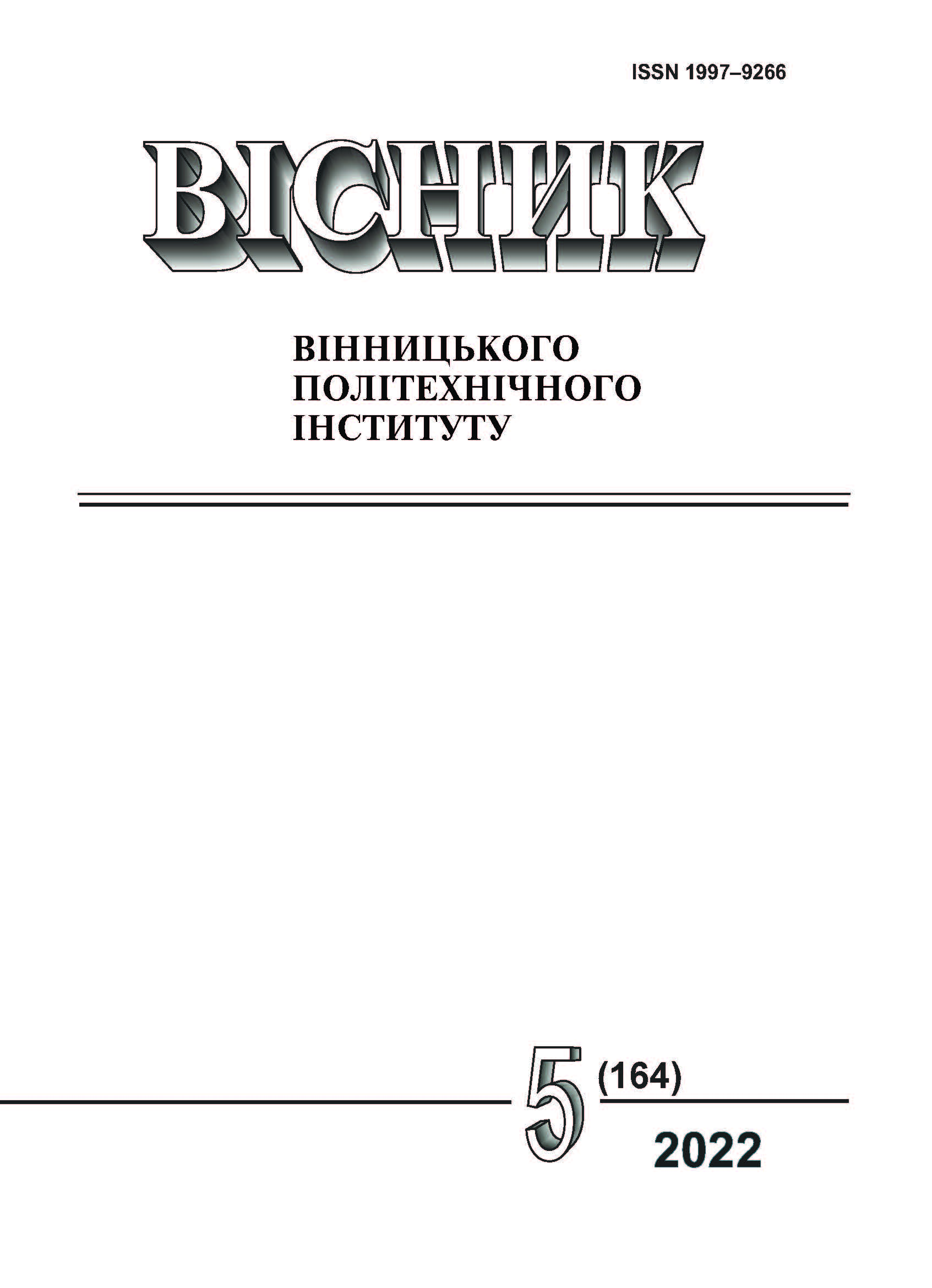Evaluation of Influence of Sanitary and Radiative Indicators on Ecological Safety of Rivne Region
DOI:
https://doi.org/10.31649/1997-9266-2022-164-5-38-44Keywords:
microelements, heavy metals, caesium-137, radon, ecological safety, risk, threat, danger, measuresAbstract
The article gives research data of indicators of sanitary state of the soils in Rivne region as for the content of microelements and heavy metals, such as boron, manganese, zinc, cupre, plumb, cadmium, and radiative state as for the content of caesium-137 in soils, the density of radon flow out of their surface, the level of its ecological safety.
It is recommended to carry out estimation of the state of ecological safety of the districts, as for indicators stimulators of the content of boron and manganese microelements in soils, according to dependencies which have the form of increasing parabolas of the second order, but as for indicators destimulators of the content of zinc, cupre, plumb, cadmium, caesium-137, the density of radon flow, it is recommended to use dependencies which have the form of descending parabolas of the second order.
It is ascertained that ecological safety as for the content of boron is estimated by the following categories: 15 districts as “safety”, one district as “risk”, as for the content of manganese — by the categories 15 districts as “safety”, one district as “risk”; as for the content of zink — by the category “safety” — 16 districts; as for the content of plumb 15 districts — as “safety”, one district as “threat”, as for the content of cupre — by the categories “safety” 12 districts, “risk” — 1, “threat” 3 districts, as for the content of cadmium by the category “safety” — 16 districts.
According to aggregated indices of ecological safety, sanitary state of region soils is estimated by quantitative and qualitative indices, namely, in Polissia zone from 0,85 to 0,91, that corresponds to 7 districts of the category “safety”, and in Forest and Steppe zone from 0,72 to 0,91, that also corresponds to the category “safety” for 9 districts.
As for the content of caesium-137, ecological safety of the soils in Polissia zone is estimated by the following categories: 2 districts as “safety”, one — as “risk”, 2 districts as “threat”, 2 districts as “danger”, but in Forest and Steppe zone 9 districts are estimated as “safety”. As for the size of density of radon flow out of the soils surface in Polissia zone, ecological safety is estimated by the following categories: 6 districts as “safety”, one — as “threat” and in Forest and Steppe zone 3 districts as “risk”, 5 — as “threat”, one district as “danger”.
According to aggregated indices of ecological safety of radiactive state of region soils it is estimated by quantitative and qualitative indices, namely, in Polissia zone from 0,27 to 0,81, that corresponds to the category “safety” for 3 districts, “risk” — for 2 districts, “threat” for 2 districts, and in Forest and Steppe zone from 0,62 to 0,80, that corresponds to the category “safety” for 3 districts, “risk” for 6 districts.
In order to reduce the effect of destimulators, namely, a great content of caesium-137 in the soils of Polissia zone and its possible accumulation in agricultural products, it is recommended to keep positive balance of humus in arable lands et the expense of application of differentiated norms of organic fertilizers (from 1 to 16 t/ha) and soil liming; in case of increased release of radon out of soil surface and its entry into buildings it is recommended to ventilate them and arrange shielding of basements during construction.
References
О. В. Варжель, «Методика оцінки впливу показників якості довкілля на поширеність хвороб населення районів Рівненської області,». Вісник Вінницького Політехнічного університету, № 4 (163), с. 19-26, 2022. https://doi.org/10.31649/1997-9266-2022-163-19-26 .
З. В. Герасимчук, і А. О. Олексюк, Екологічна безпека регіону: діагностика та механізм забезпечення. Луцьк, Україна: Надстир’я, 2007, 280 с.
В. О. Шумлянський, О. М. Івантишина, і В. М. Артеменко, Малі токсичні елементи в рудах і навколишньому середовищі ртутних, поліметалічних і золоторудних родовищ Донбасу і Закарпаття. Київ, Україна: Знання України, 2002, 143 с.
І. І. Залеський, і М. О. Клименко, Екологія людини. Київ, Україна: Видавничий центр «Академія», 2005, 288 с.
М. М. Городній, А. В. Бикін, і Л. М. Нагаєвська, Агрохімія. Київ, Україна: ТОВ «Алефа», 2003, 786 с.
Химическая энциклопедия, т. 1. Москва: Сов. энцикл., 1988.
В. П. Кучерявий, Екологія. Львів, Україна: Світ, 2000, 500 с.
Л. Г Бондарев. Микроэлементы — благо и зло. Москва: Знание, 1984, 370 с.
М. О. Клименко, О. М. Клименко, і О. О. Лебедь, «Характеристика території Рівненської області за величиною густини потоку радону з ґрунту,». Ядерна фізика та енергетика, № 23, с. 122-130, 2022. https://doi.org/10.15407/jnpae2022.02.122 .
Downloads
-
PDF (Українська)
Downloads: 74
Published
How to Cite
Issue
Section
License

This work is licensed under a Creative Commons Attribution 4.0 International License.
Authors who publish with this journal agree to the following terms:
- Authors retain copyright and grant the journal right of first publication.
- Authors are able to enter into separate, additional contractual arrangements for the non-exclusive distribution of the journal's published version of the work (e.g., post it to an institutional repository or publish it in a book), with an acknowledgment of its initial publication in this journal.
- Authors are permitted and encouraged to post their work online (e.g., in institutional repositories or on their website) prior to and during the submission process, as it can lead to productive exchanges, as well as earlier and greater citation of published work (See The Effect of Open Access).





